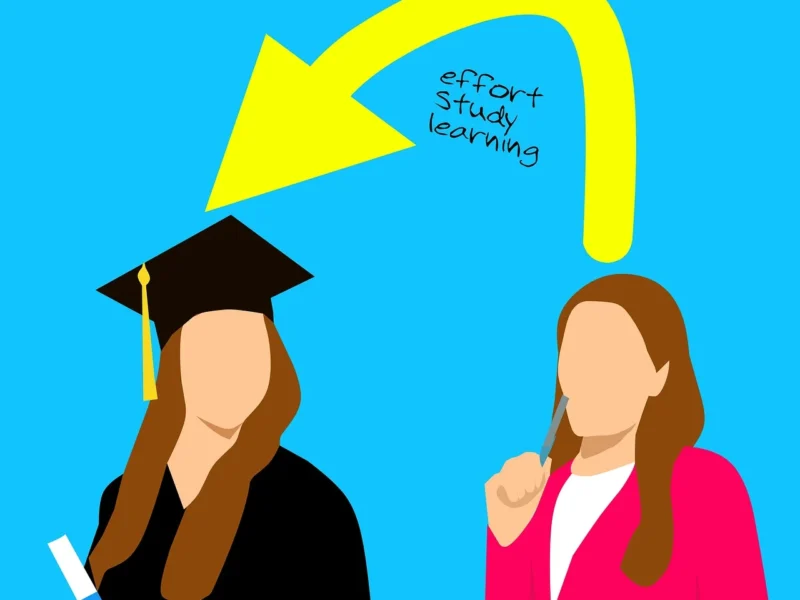Have you ever pondered on the journey that follows the coveted high school diploma? This journey, known as post secondary education, is a turning point in the lives of many, unlocking doors to future careers and worlds of knowledge. Let’s delve into the complexities and opportunities it presents.
Defining the Next Step in Learning
Post-secondary education is a pivotal stage where individuals step into specialized learning paths after their high school journey concludes. This phase is distinguished by a diverse portfolio of degree and certification programs tailored to carve out one’s career or to enhance one’s intellect and expertise.
From Lecture Halls to Hands-On Training
Post secondary education incarnates through academic degrees like bachelor’s, master’s, and doctorates, each offering an in-depth dive into specific domains of knowledge.
It transcends to vocational terrain with diplomas and certificates focused on skill acquisition for immediate industry application.
Apprenticeships intertwine learning with doing, providing on-the-job training that pairs mental insight with manual dexterity.
Higher education takes place in settings ranging from the traditional ivy-coated walls of universities to the pragmatic environments of trade schools.
The True Essence of Higher Learning
Post secondary education is not solely about obtaining a degree; it’s about molding individuals into professionals, thinkers, and innovators. It’s a key to unlocking personal potential, fostering career growth, and, for many, a means to elevate socioeconomic status. It is the groundwork for personal evolution and societal contribution.
Is Post Secondary Education The Same As Going To College?
While the term “college” often comes to mind when post secondary education is mentioned, the landscape is much more expansive. College is a segment of this larger educational framework, which itself is a vibrant and ever-evolving tapestry of learning environments.
More than Just College
College education, including associate and bachelor’s degrees, represents a conventional pathway to higher education focusing on a broad academic curriculum.
Vocational and trade schools offer a hands-on approach to training, culminating in a workforce-ready skill set.
Community colleges and professional schools cater to those seeking specific career paths or flexibly paced programs.
The Broader Scope of Learning Opportunities
Post secondary education encapsulates the full gamut of possibilities that extend beyond the traditional four-year college experience. It’s a pathway that adapts to the educational and professional aspirations of each individual, acknowledging that the road to success is not one-size-fits-all.
What Types Of Programs Are Included In Post Secondary Education?
Post-secondary education is an umbrella term that covers a rich variety of programs, each designed to propel learners toward their career goals, whether that be in a conference room or a culinary studio.
A Spectrum of Educational Programs
Vocational and Technical Training: Focused courses aimed at equipping you with specific industry skills.
Academic Degree Programs: From associate to doctoral degrees, they offer rigorous study across various fields.
Certificate Programs and Diplomas: Tailored for immediate job entry, these are compact and targeted training sessions.
Continuing Education: Courses aimed at professionals looking to update or expand their skill set.
The Many Faces of Learning
These programs take on many shapes, with big-league universities, community-driven colleges, specialized trade schools, and convenient online platforms all playing their part in delivering quality education. This variety ensures that no matter the learning style or career objective, there is a post secondary program that fits the bill.
How Long Does Post Secondary Education Typically Last?
The duration of post secondary education is not cast in stone; it varies as widely as the courses on offer, reflecting the depth and breadth of the fields it encompasses.
Understanding the Educational Timeline
An associate degree might see you hitting the books or the tools for around 2 years.
A bachelor’s degree extends the commitment to roughly 4 years of academic engagement.
Master’s degrees add another 1-2 years post-bachelor’s, depending on the course’s intensity and focus.
For future doctors or lawyers, their professional degrees stretch out further, demanding several years coupled with hands-on practice.
Vocational programs, though shorter, are no less intense, varying from a few weeks to a couple of years.
Tying Duration to Ambition
The time spent in post secondary education is an intentional sacrifice on the altar of personal and professional development. It’s about investing in a future where one’s potential is fully realized and ambitions are set into motion.
Is Post Secondary Education Necessary For A Successful Career?
Post secondary education is often seen as a ladder to success, with certain professions treating it as a non-negotiable entry ticket. For specialists in fields like medicine or law, this advanced study phase is indispensable for even the entry-level positions.
The Diverse Routes to Career Fulfillment
Specialized knowledge from higher education correlates with greater employment prospects and financial gain.
Nonetheless, success knows many paths. Vocational courses, apprenticeships, or entrepreneurial routes mark equally valid paths to achievement.
With the rise of the digital age, the conventional necessity of post secondary education is being reevaluated.
Success: A Multifaceted Picture
The parameters defining a successful career are fluid, incorporating soft skills, professional networks, personal experiences, and the capacity for lifelong learning. Post secondary education is but one piece of a larger puzzle, indispensable for some, optional yet beneficial for others.
Understanding Post Secondary Education in the USA
Post secondary education, also referred to as tertiary education, in the United States, encompasses a broad spectrum of educational programs that follow after the completion of secondary education, which typically culminates with high school graduation.
This level of education is not compulsory but is critical for those looking to advance their knowledge and skills in specific fields or attain qualifications necessary for many professional paths.
Types of Post Secondary Institutions
Post secondary institutions in the USA can be classified into several categories, each serving different educational needs and career aspirations. They include:
Community Colleges: Typically offering two-year associate degree programs, certificates, and diplomas. Many students also start their education here due to lower tuition costs before transferring to four-year institutions.
4-Year Colleges and Universities: These institutions grant baccalaureate (bachelor’s) degrees, and many also offer graduate programs leading to master’s or doctoral degrees in a diverse range of disciplines.
Vocational and Technical Schools: These schools focus on practical and skills-oriented training designed to prepare students for specific trades or professions, from automotive technology to healthcare.
Professional Schools: Specialized programs in fields such as law, medicine, business, and education, often requiring prior undergraduate education.
Online Universities and Colleges: Offering flexibility and convenience, distance education through online platforms has become increasingly popular and provides programs that can lead to degrees or certificates.
Key Features of Post Secondary Education in the U.S.
Liberal Arts Education: Many U.S. post secondary institutions, particularly undergraduate programs, emphasize a liberal arts education, which aims to provide a well-rounded academic experience across humanities, social sciences, natural sciences, and the arts.
Credit System: The U.S. educational framework uses a credit system that quantifies and tracks students’ academic progress toward their degree. Students must accumulate a certain number of credits, which correspond to hours spent in class as well as the effort outside of class.
Majors and Minors: Students typically declare a major in a specific field that is their primary focus of study, while a minor is a secondary concentration, allowing students to explore another discipline.
Extracurricular Activities: American post-secondary institutions often offer a wide array of extracurricular activities, including sports, clubs, and societies, which are integral to the college experience and contribute to personal development.
Admissions and Financial Aid
The admissions process for post secondary institutions in the USA can be highly competitive, especially for prestigious universities. Criteria may include academic transcripts, standardized test scores (such as the SAT or ACT), letters of recommendation, essays, and extracurricular involvement.
To manage the often substantial cost of post secondary education, financial aid is available in various forms. Scholarships, grants, loans, and work-study programs help to make education accessible to students from different economic backgrounds.
Understanding Post Secondary Education in California
Post secondary education in California encompasses a wide array of educational options beyond the high school level. This level of education is designed to cater to various career paths, personal development goals, and academic pursuits and is crucial for both individual growth and the vitality of the state’s economy.
Types of Post Secondary Institutions
California boasts a diverse range of post secondary institutions, each with unique offerings and specialized programs:
Community Colleges: There are more than 100 community colleges throughout the state. These institutions provide two-year associate degrees, certificates, and transfer programs to four-year universities. They are an affordable entry point into higher education, also offering remedial courses and continuing education for adults.
California State University (CSU) System: The CSU system is one of the largest public university systems in the United States, with 23 campuses across the state. It offers bachelors, master’s, and a number of doctoral degrees in a wide variety of fields.
University of California (UC) System: The UC system is a prestigious public university system comprising 10 campuses. Renowned for research and innovation, the UC offers undergraduate, graduate, and professional degrees and is home to many top-ranked academic programs.
Private Colleges and Universities: Beyond the public systems, California is home to numerous private institutions ranging from small liberal arts colleges to large research universities. These schools often provide a different atmosphere and may have religious affiliations or specialized educational focuses.
Vocational and Technical Schools: For those interested in more direct pathways to specific careers, vocational schools offer specialized training in fields like healthcare, technology, the trades, and the arts.
Financial Aid and Scholarships
To support students wishing to pursue post secondary education, California offers various financial aid programs including grants, scholarships, and loan forgiveness. High-profile programs such as the Cal Grant, California Dream Act, and Middle-Class Scholarship provide opportunities for students from diverse economic backgrounds to afford their education.
Online and Continuing Education
Moreover, California has embraced the growth of online education, with many traditional institutions offering online courses and degree programs. These options cater to working professionals, non-traditional students, and those with logistical constraints that make attending in-person classes challenging.
Importance to the Economy and Job Market
The value of post secondary education in California cannot be underestimated. A well-educated workforce is critical for competitive industries like technology, entertainment, green energy, and biotech, all of which have significant presences in the state.
Education at this level not only equips individuals with the skills and knowledge necessary to excel in these fields but also fosters innovation, critical thinking, and creativity.
By providing diverse educational options in both traditional and emerging disciplines, post secondary education in California is a cornerstone for personal prosperity, economic growth, and societal advancement. Whether through two-year degrees that lead directly to a career or through studies that form the basis for advanced education, California’s commitment to accessible and education.
Post Secondary Education Examples
Universities
Universities offer a variety of undergraduate, graduate, and doctoral programs. For instance, Harvard University provides degrees ranging from Bachelor of Arts (B.A.) to Doctor of Philosophy (Ph.D.).
Community Colleges
Community colleges typically offer two-year associate degrees and certificates. An example is the Associates of Applied Science (AAS) that can be earned at Austin Community College.
Vocational and Technical Schools
These schools focus on specific trades or technical skills, such as welding or computer programming. For example, the Lincoln Tech Institute offers comprehensive training programs for automotive technicians.
Online Universities and Colleges
Institutions like the University of Phoenix deliver distance learning programs where students can earn degrees entirely online, providing a flexible option for adult learners or working professionals.
Liberal Arts Colleges
Liberal arts colleges emphasize broad-based education in the humanities and sciences. Williams College, for example, is known for its strong emphasis on undergraduate education in the liberal arts.
Professional Schools
These are specialized institutions for fields such as law, medicine, or business. The Stanford Graduate School of Business is renowned for its Master of Business Administration (MBA) program.
Art and Design Schools
Schools like the Rhode Island School of Design offer focused education in creative fields such as illustration, graphic design, and fine arts.
Military Academies
Military academies, such as the United States Naval Academy, provide a combination of military training and higher education leading to a commission in the armed forces.
Technical Institutes
Institutes like the Massachusetts Institute of Technology (MIT) specialize in science, technology, and engineering education and research.
Adult Education and Continuing Education Programs
Many universities, like New York University, offer continuing education programs for adults looking to enhance their skills or change careers, with courses available during evenings and weekends.
Beyond Books and Degrees: The True Value of Post Secondary Education
In closing, post secondary education represents a decision point, a place where intellectual pursuits and professional training converge to sculpt the workforce of tomorrow. It’s not merely about the accolades and transcripts but the deep-seated personal and societal transformation it heralds.
Whether one chooses to walk the halls of a university, engage in the immediacy of vocational training, or embark on a self-taught journey of discovery, post secondary education is a testament to the enduring quest for growth and excellence.






